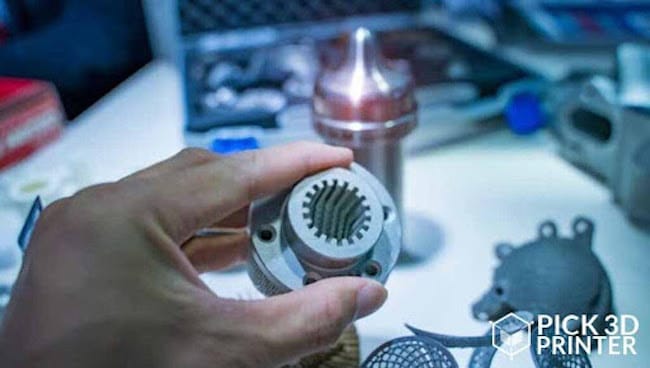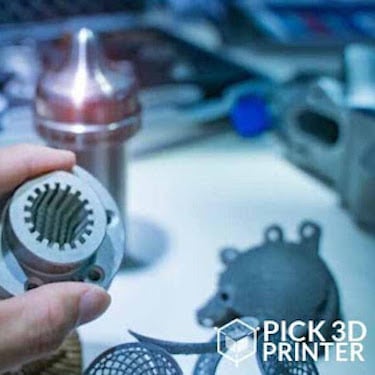
Creating parts in-house would have sounded impossible a few years back. However, with 3D printing, the concept of waiting for days and weeks to get the 3D models delivered is changing for good. Being able to transform small shops into an on-demand factory is amazing. This technology has matured significantly. Today, it is hard to imagine a future without MRO and 3D printing being seamlessly interconnected. To be candid, businesses have already started embracing the perks of additive manufacturing processes within their Maintenance, Repair, and Overhaul (MRO) operations as viable alternatives to conventional methods.
3D printing started as a rapid prototyping solution and has become an essential part of the manufacturing process. This technology is only getting more desirable and effective over time, enabling the aerospace industry to scale production while developing functional processes at lower costs
Industries focused on serving the armed forces and defense contractors are always under constant pressure to expedite repairs, complete testing of new models, and prepare aircraft back for flying. MRO and 3D printing can address these challenges to take great advantage of this technology.
In short, MRO can really benefit from the various benefits 3D printing offers. From faster production to eco-friendly solutions, there are many great changes that we must look forward to.
Flexibility to Produce Parts Quickly
Additive manufacturing comes along with unmatched flexibility. It’s the only technology that offers on-demand production at a faster speed. This is enabling MRO companies to develop spare parts and components for aircraft much faster than has traditionally been possible before.
Coupling this technology with advanced, MRO solutions can empower companies to not spend too much time in completing maintenance, repair, or overhaul tasks. In just a few hours, replacement part designs can be identified and utilized to create replacement parts as needed. Without waiting for weeks or months for the arrival of the spare parts, the MRO process to manufacture these components can be done in-house, as the demand arises.
Minimize the Operating Costs
With the help of 3D modeling software, MRO can design parts with almost no wastage and carry the scheduled maintenance on time. Thus, reducing the downtime, even during unplanned events while minimizing the overall operational cost.
Further, companies invest a lot of time and money in finding spare parts that are difficult to locate. Using 3D printers, this problem can be eliminated. Additive Manufacturing processes can help create any design that is feasible in the real world, virtually.
So, instead of wandering around, a digital MRO and 3D printing solution can design the component and print it on demand.
Reduced Production Cost
High-volume production can sometimes lead to the unnecessary accumulation of unused parts and components. Not only does it occupy space for storage, but many of these parts go unused or can become obsolete, leading so many companies to waste money, resources, time, and effort.
Additive Manufacturing technologies can support the creation of finer product details highest levels of quality perfection. And, 3D printed parts are lighter in weight given the additive production process. These attributes are highly desirable for companies operating in the complex discrete manufacturing industry.
Operators using these machines can support their quality management system while reducing production costs. 3D printed parts can be made with greater consistency and higher quality by constantly documenting, tracking, and resolving discrepancies. Moreover, 3D printing in-house eliminates the need for shipping, inventory, as well as expenses related to labor costs.
Easier to Improvise Designs
Undoubtedly, prototyping remains the most popular application of 3D printers., MRO and 3D printing can make use of this process by introducing new or updated designs with 3D models. Additive manufacturing allows users to modify designs with greater ease. Changes to a 3D file can be made quickly to test and analyze new part configurations, materials, or designs.
Therefore, MRO operators must understand the importance of this technology in terms of research and maintenance.
Although we are not yet at a point of adopting 3D printers as a standard solution, the technology acceptance as a spare part manufacturing solution is already changing the future of MRO. Not only can this strategy simplify the creation of complex parts, but the modification of existing aircraft designs can become easier too. This is due to the faster prototyping benefits that 3D printers offer.
Conclusion
Without a doubt, additive manufacturing has the capability to add new efficiencies to MRO operations. From reducing the waste created in manufacturing parts to obtaining accurate parts that are lighter in weight, 3D printing can help companies achieve perfection in MRO, quality, and production processes.
Using 3D printers, MRO operators can manufacture spare parts and complete the job on time. Inventory can be minimized while the quality of the production process can be nearly perfect. In short, additive manufacturing enables the low-cost production of components while reducing reliance on a global supply chain that can be unpredictable – especially today – while removing costs from your business.

